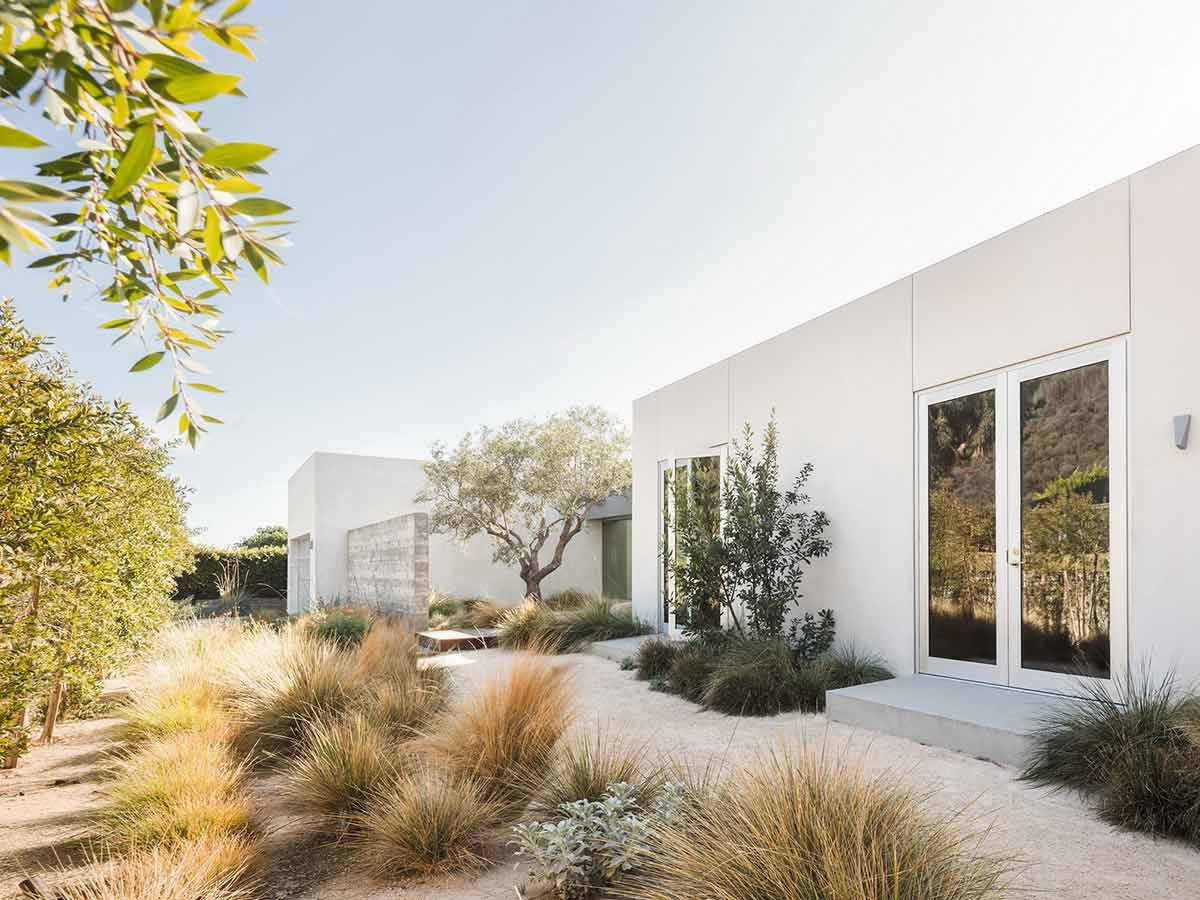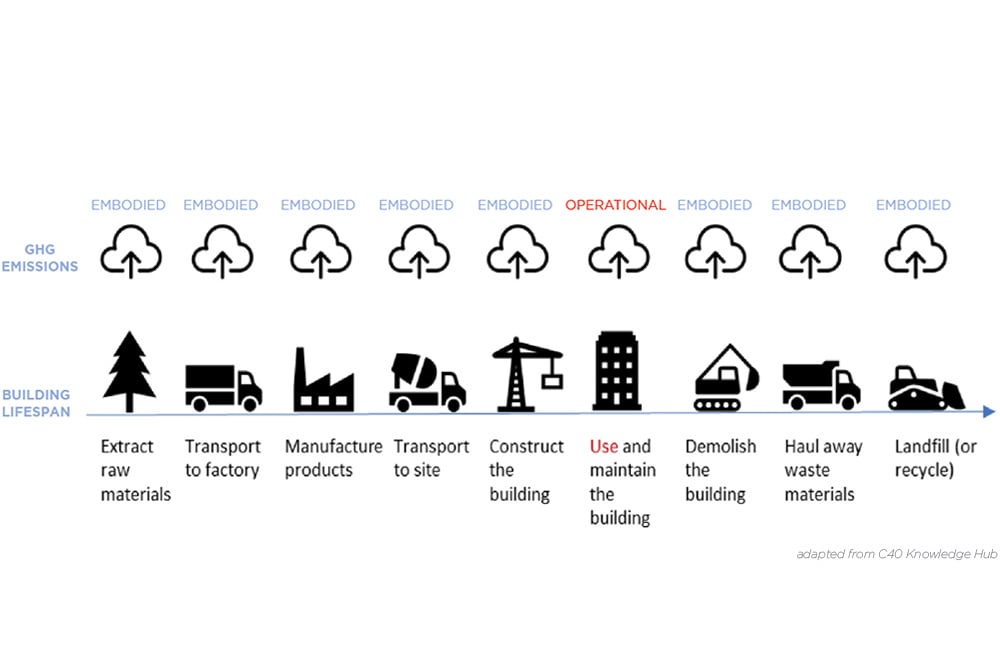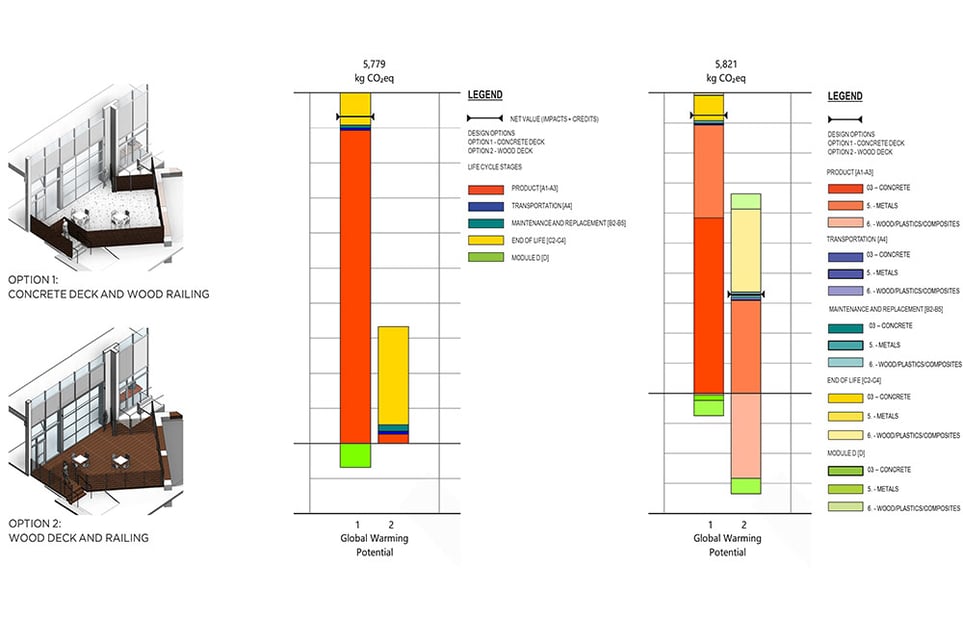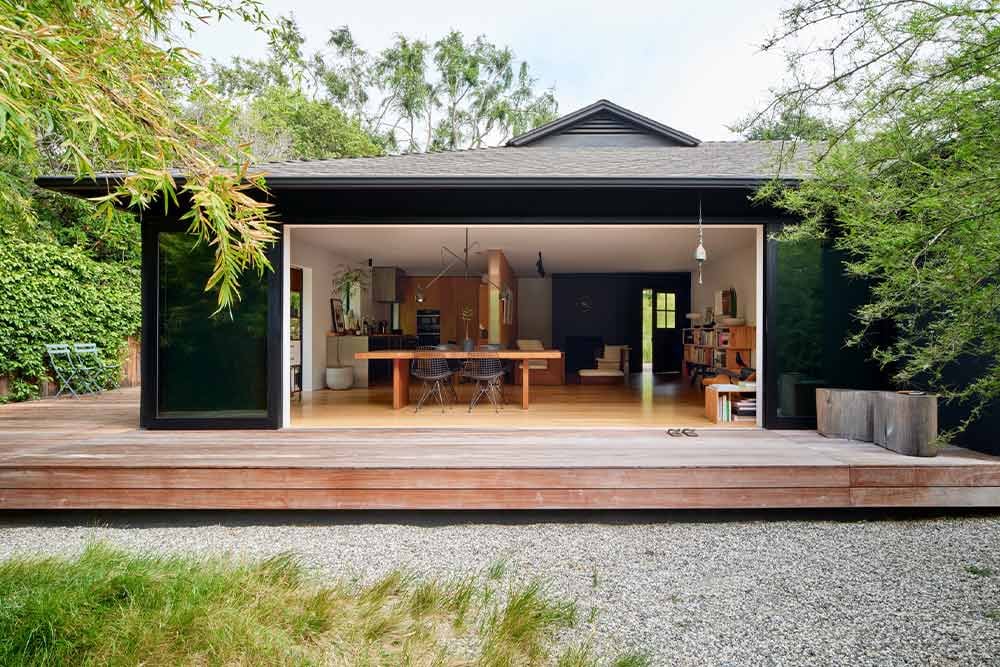 Together, concrete and steel are the foundation of modern society. These two materials support the weight of billions of our homes and form the roads, bridges, and runways that allow people and goods to move around the world. Yet, at the same time, these materials are enormous contributors to climate change. Concrete alone is responsible for nearly 10% of global carbon emissions: If the concrete industry were a country, it would be the third largest emitter of CO2, trailing only China and the United States. The steel industry has a comparable environmental footprint.
Together, concrete and steel are the foundation of modern society. These two materials support the weight of billions of our homes and form the roads, bridges, and runways that allow people and goods to move around the world. Yet, at the same time, these materials are enormous contributors to climate change. Concrete alone is responsible for nearly 10% of global carbon emissions: If the concrete industry were a country, it would be the third largest emitter of CO2, trailing only China and the United States. The steel industry has a comparable environmental footprint.
As society rushes to avert the worst effects of climate change, architects are beginning to consider the hidden costs of the materials we use to construct the built environment. With careful accounting of the embodied carbon emissions in our homes and office buildings, and creative design strategies to mitigate them, architects and their clients can play a critical role in preserving a healthy planet.
What is Embodied Carbon?
Embodied carbon refers to the CO2 emissions associated with the extraction, manufacturing, transportation, installation, and eventual demolition and disposal of building materials. This is in contrast to operational carbon, which describes the emissions associated with the energy required to operate a building (e.g. heating, lighting). To date, most efforts to minimize the environmental impacts of the built environment have focused on the latter, with programs such as LEED, Living Buildings, and Passive House rewarding the use of energy-efficient design strategies. These efforts, of course, are vital to decarbonizing the building industry, as building operational carbon accounts for nearly a third of total carbon emissions worldwide.
 However, there are clear strategies to eliminate building operational carbon in the coming years. In addition to energy-efficiency, we can design buildings that feature all-electric appliances, heat pumps, and electric water heaters instead of ones that rely on gas. (Opting for electric over gas can drastically improve indoor air quality as well, which has enormous health benefits, particularly for families and children.) As more and more of our electricity is produced from renewables, emissions from building energy use will diminish.
However, there are clear strategies to eliminate building operational carbon in the coming years. In addition to energy-efficiency, we can design buildings that feature all-electric appliances, heat pumps, and electric water heaters instead of ones that rely on gas. (Opting for electric over gas can drastically improve indoor air quality as well, which has enormous health benefits, particularly for families and children.) As more and more of our electricity is produced from renewables, emissions from building energy use will diminish.
This means that embodied carbon will become an ever-greater share of a building’s total environmental footprint. Of the total greenhouse gas emissions from new construction between now and 2050, almost half is expected to come from embodied carbon. These emissions are irreversible as soon as building materials are specified. This means that even if a building is equipped with the most efficient all-electric heating, cooling, and lighting systems, it could still possess a considerable carbon footprint before residents even move in, if careful thought is not given to low-carbon material selection.
Ultimately, climate change is driven by the total amount of carbon we emit, not just the energy we consume. Between now and 2050 is the critical period during which we must aggressively cut total emissions in order to stand any chance of avoiding 3°C of warming by 2100. Therefore, reducing embodied carbon emissions via rigorous accounting and creative material choices is a crucial challenge that we must begin addressing today.
What can we do?
We can start to fully account for embodied carbon by conducting Life Cycle Assessments (LCA) of the buildings we design. LCAs are comprehensive analyses that quantify the environmental impacts of an entire building or product at each phase of its lifespan. LCAs, which were once painstaking academic pursuits, have become more accessible to the architecture industry in recent years with the advent of digital tools that are easily integrated into our workflows. At EYRC, we have begun using Tally, a plug-in application for Revit, which allows us to perform whole building LCAs and compare the environmental implications of different design options. This data gives us insight into which materials/design options have the highest embodied carbon emissions, allowing us to make informed decisions at every juncture in the design process.

These LCAs have helped us identify the following strategies for reducing embodied carbon in our projects that we can discuss with clients at the onset of a project:
First, because concrete and steel are responsible for a large share of embodied carbon emissions, we can opt to build with naturally carbon-sequestering materials like wood as much as possible. This allows our buildings to serve as carbon “sinks.” However, it’s important to note that wood should be locally sourced from sustainably managed forests (e.g. FSC-certified wood) to achieve these carbon-negative benefits. We should also aim to design wood structures for longevity and durability, to prolong the storage of carbon. One way this can be done is by considering future uses of a building and designing flexible spaces for multiple adaptations.
When elimination of concrete and steel is not feasible, we can employ lower-carbon varieties. For concrete, we can specify mixes with a lower cement content: substituting some cement for slag or fly ash diverts these byproducts (of steel production and coal combustion, respectively) away from landfills and improves the concrete’s strength. We can also consider emerging technologies from companies like CarbonCure, which injects CO2 into concrete during mixing, resulting in a stronger concrete and net carbon reductions of 5-7%, or like Blue Planet, which creates synthetic aggregate produced from captured CO2, producing carbon-neutral, or even carbon-negative, concrete. To minimize the embodied carbon of steel, we can specify North American steel, which generally has a smaller carbon footprint than steel from overseas due to domestic electric manufacturing processes and recycling practices.
The judicious selection of finishes can also play a significant role in reducing embodied carbon emissions. Using natural products like wood siding or bamboo instead of their synthetic counterparts embraces the natural textures and scents of the material while enhancing sustainability. Incorporating salvaged building materials, such as reclaimed wood, not only has a lower embodied carbon footprint than newly manufactured materials but also adds unique character to a house. Alternatively, we can minimize the number of finish materials altogether – for example, exposing and polishing concrete structural slabs to double as finished flooring avoids embodied carbon associated with tiles and carpet, while also achieving a monolithic aesthetic that some of our clients seek.

Finally, perhaps the most effective strategy to reduce embodied carbon is to reuse and upgrade existing buildings as much as possible, rather than demolishing and constructing anew. Renovation projects that reuse existing foundations and structures can reduce embodied carbon by up to 75% relative to an entirely new building.

Actions We’re Taking
EYRC recognizes that taking responsibility for building emissions is a major challenge that our industry must confront. Now is the time to not only address energy efficiency but also our material specifications—emissions associated with the construction of our buildings extend up and down the supply chain. We are working internally to build firm-wide carbon literacy, integrate digital LCA tools like Tally into our workflows to assess our material choices, and strategize the implementation of these applications across project teams for use throughout the entire design process.
The impact that our decisions can have on current climate trajectories is real and significant. We, as architects, make the very decisions that determine the amount of embodied carbon in the buildings we design. We are eager to strategize with our clients and develop project-specific solutions that meet all project goals while upholding our ethical responsibility as makers of the built environment. We each have a critical role to play.

Written by Ann Tanaka
Since joining EYRC’s San Francisco studio in 2019, Ann Tanaka has been designing residential spaces that reflect the lifestyles and personalities of clients, while responding to each unique site. Believing that great architecture is not only beautiful, but socially equitable and environmentally sustainable as well, Ann is a member of the Design Justice Committee and the Wellness Task Force. She is a graduate of Stanford University.
